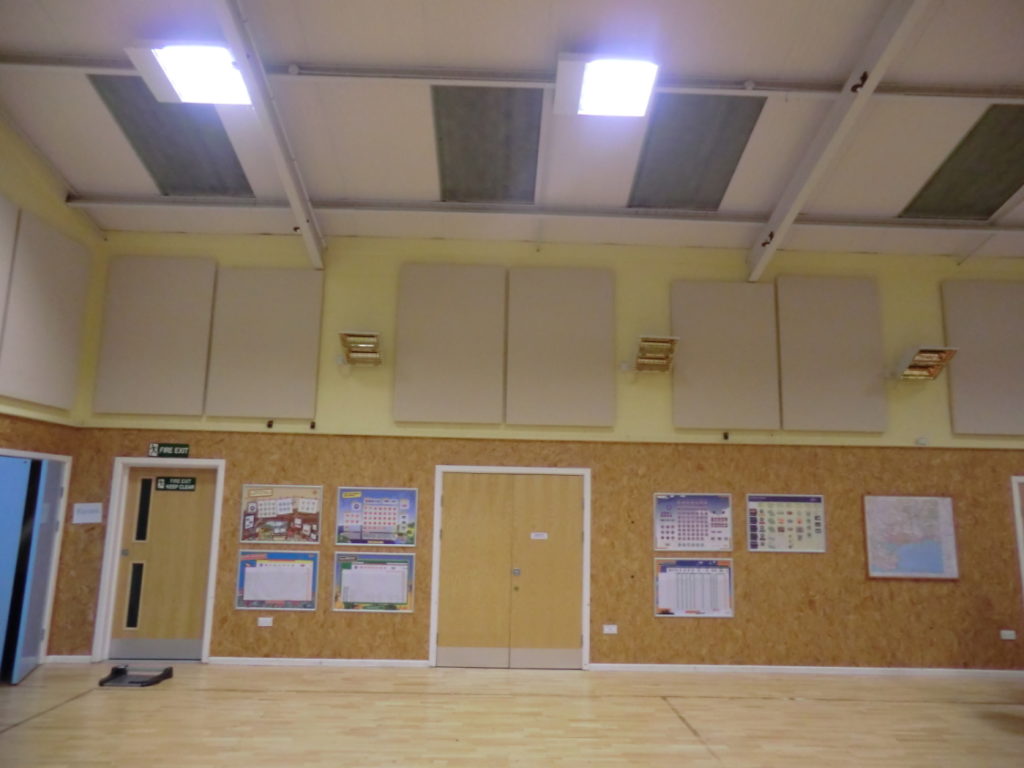Reducing noise in sports halls
Noise control in sports halls
Reducing noise in sports halls is a requirement of BB93 and Building Regulations.
Gyms and indoor sports halls are much larger spaces than standard classrooms and because the reverberation time is related to the volume of a room, the larger the room the longer the reverberation time will be without significant noise control.
BB93 has recommended guidelines for internal ambient noise levels and reverberation times but these are often pushed to the limit, if not exceeded, due to costs involved with larger scale acoustic treatment.
Alternative performance standards have been suggested by other professional bodies which allow for longer reverberation times.
Reducing Noise in Sports halls
Sports halls on school sites are required under the Building Regulations to comply with BB93 with respect to sound insulation, reverberation times and internal ambient noise levels.
The BB93 criteria for indoor ambient noise in these spaces is ≤40dBA with a reverberation time Tmf<1.5 seconds.
Other bodies’ criteria are slightly less stringent with reverberation times between 1.5 and 2.0 seconds at mid-frequency and with sound insulation being capable of achieving a minimum of NR40 (≈45dBA).
Good acoustic design is important as long reverberation times lead to:
- poor speech intelligibility
- high background noise levels
- increased stress levels for the occupants
- management/control difficulties.
The greater the background noise the more the need to shout and currently sports teachers experience significantly more voice and throat problems than teachers of other subjects.
Care needs to be taken when using empirical formulas for calculating reverberation times within spaces as large as sports halls.
Empirical formulas often assume an even distribution of acoustically absorbent material throughout a space so calculating that, for example, 800m² of Class B absorbent material will reduce the reverberation time to 1.5 seconds may not work in the real world.
A sound test may reveal that, for flutter echoes between hard opposing untreated walls, give higher than expected reverberation times.
Our AC50 steel perforated acoustic panels are probably the most cost effective way, per m2, to achieve the best results on a limited budget as they can be easily trimmed around fixtures and provide excellent surface area coverage.


